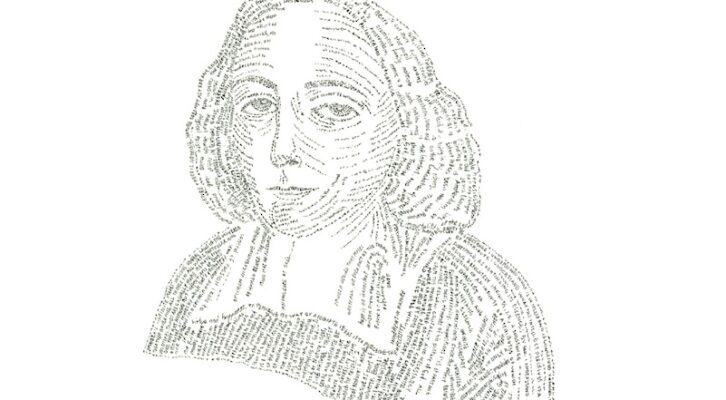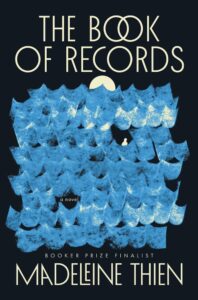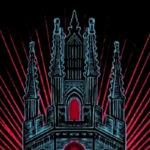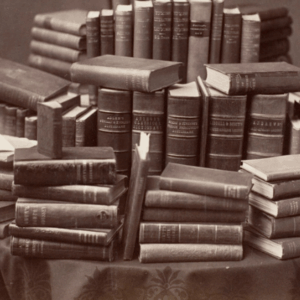
What Spinoza's Metaphysics Can Reveal to Us About the Creative Process
Madeleine Thien on Using Fiction to Find the Many Rooms Within Ourselves
Portrait of Baruch Spinoza by Bernice Eisenstein, artist and writer, living in Toronto, Canada. @beisen49
1. Spinoza’s rooms
For three years, I have been sitting in Spinoza’s rooms. He had several: some in Amsterdam, one in Rijnsberg, two in The Hague. The year is 1656 or 1661 or some parcel of time before his death, at the age of 44, in 1677. All of Spinoza’s rooms are small, and only a few have a window.
He lives in one more room, too, which is only real in my imagination. This is a small room located far in the future, a century from now.
Actually I’ve come to think that many fictional works, especially those existing in the historical past, are set in the future, and that we writers are trying to see around the curve of time. What comes into being after we’re gone? Perhaps multiple universes of our own past; or shadows cast forward from our present.
In my imagination, Spinoza lives next door. I drop by to see him nearly every morning. I pretend I’m pulling time behind me, like a long garment, until the year 2020 squeezes through the doorway of the year 1660, and even manages to escape upstairs to the year 2300. I take a seat beside him. Spinoza, or Bento as his neighbors call him, is meticulous and patient, “eerily self-sufficient,” and barely registers my arrival, which suits my purposes all the better. I don’t need to tell him, Keep doing what you’re doing, Bento! Or, Pretend I’m not even here!
Bento is awake early. He is a lens grinder and the work cannot be done by candlelight; the rising and setting sun determine his hours.
A novelist is loyal to many rooms. Fiction is the act of imagination, and through imagination I give testimony to the complexity of living.
Lens grinding is a physical job, a mathematical job, and also an ear-splitting job. Bang, clank, whirr. That’s the machine, the lathe, that was in former times called the mother of all machines. It explodes into life the moment Bento nods his foot against the treadle, which activates the crankshaft, drives the flywheel and sets the spindle turning. Despite appearances, Bento’s work is highly delicate. Out of rounds of glass, he is making lenses for eyeglasses, microscopes and telescopes. To do so, he must polish out, by lathe or by hand, the sagittal arc which is a measure of the exactitude of glass to be ground out in order to create an optical curve. (We know the sagittal most intimately as the line or curve that runs over the top of our heads, the little groove in which we can feel, with our fingertips, the two halves of our skull.)
2. Fictional telescopes
Spinoza’s field is geometric optics, the branch of physics concerned with properties of light as understood through the laws of reflection and refraction. Spinoza made lenses for both microscopes and telescopes; he had many clients, including Christiaan Huygens, the Dutch mathematician who was the first to identify, in 1656, a moon of Saturn (it was a moon, and not what Galileo called “Saturn’s ears.”)
A telescope is a point of view. It brings objects nearer by first using a lens to gather light, and then bringing that light, which is the image, into focus. A second lens, the eyepiece, magnifies that image across the viewer’s retina. Just like that, two lenses carry Saturn’s moon—nearly 1 billion kilometers away—right up to the eye. 1 billion kilometers collapsed in space and time, so that Saturn feels as near as the cup of coffee on your desk.
The greater the distance of magnification, the further we see into the past; light takes time to reach us. Our most powerful telescopes, like the Hubble, receive images of things as they were 13.2 billion years ago.
In Spinoza’s time, the cellular universe came within view, increasingly fine-grained, radically complex. Meanwhile, looking up through the first telescopes—the so-called starry tubus—men hoped to glimpse God’s patterns. The further they saw, the smaller we became. Philosophy begins with wonder and, just as powerfully, ends with wonder. Wonder is forgiving. I need not cast aside my bewilderment, or believe only one truth, or have an answer at the end, in order to sustain my wonder.
To the question, what are we within the scope of the universe, Spinoza’s contemporaries intuited an answer that was cataclysmic for faith, religion, philosophy, politics, science, art, selfhood. “For in the end,” writes Blaise Pascal in Pensées in 1670, “what is a man as regards nature? Nothing compared to the infinite, everything compared to nothingness, a medium between nothing and the all, infinitely distant from understanding the extremes.”
Through the telescope—that series of glass lenses—we arrived at another point of view. The world changed its meaning, or to put it another way, we wondered if we might interpret it differently.
3. Gossip
I know a lot of things about Spinoza which he does not tell me and which come to us, thankfully, by way of gossip. Gossip: a word derived from the Old English godsibb, godparents.
To his friends, Spinoza was a great soul, a brilliant and generous teacher; to his detractors, he was total evil, a monstrosity, satan himself.
Baruch Spinoza, or Espinosa, was born in Amsterdam in 1632. He is known by a trinity of names: Baruch, Bento and Benedictus, all of which mean blessed. His Portuguese Jewish family had fled the Inquisition and he grew up in the Vlooienberg, the Jewish quarter, where the painter Rembrandt van Rijn made his living. By the time Spinoza was 21, he had lost his mother, brother, sister, step-mother and father to illness, and he was the guardian of two surviving siblings. The following year, 1654, when he was 22, the plague returned to the Netherlands, killing 17,000 in Amsterdam alone.
Bento was reading Descartes and Euclid, and studying Latin; he was running a business importing olive oil, figs, wine and sugar. When he was 23, a notice appeared up and down his neighborhood:
By decree of the angels and by the command of the holy men, we excommunicate, expel, curse and damn Baruch de Espinoza, with the consent of God, blessed be He, and with the consent of the entire holy congregation…
Community elders accused Bento of “wicked ways,” “monstrous deeds” and “abominable heresies”—without ever naming the exact crime itself. The Edict continues,
Cursed be he by day and cursed be he by night; cursed be he when he lies down and cursed be he when he rises up. Cursed be he when he goes out and cursed be he when he comes in. The Lord will not spare him, but then the anger of the Lord and his jealousy shall smote against that man, and all the curses that are written in this book shall lie upon him, and the Lord shall blot out his name from under heaven…But you that cleave unto the Lord your God are alive every one of you this day.
If anyone came within “four cubits” of him—about two meters—of if they read his writings, they would, like Bento, be cast out of their place “in this world and the next.” Bento had not yet published a single word.
The elders also castigated him for being an ungrateful student. Spinoza is said to have thanked them for their teachings, and to have replied, In return, I am unexpectedly teaching you something. I am teaching you how to excommunicate someone like me, and how to remove all dissenters and freethinkers from your midst.
Biographical accounts claim that Spinoza was unbothered by these events, but I really doubt that. I think he had a poker face. Throughout his life, in all the letters that he wrote to cherished friends, and in his own later philosophical works, he never referred to this time. Not once. My personal belief is that the most painful things never meet the page.
Spinoza packed his belongings and moved into what would be the first of many transient rooms. First, he lived in the house of his Latin teacher. This was a busy place, with scores of students young and old running up and down the stairs. A high school, basically. Spinoza began teaching Latin. They say that he watered down his ale. Beer was the drink of choice, cleaner than water. And that he had three sets of clothes, no more. (Clothing was prohibitively expensive back then; an ordinary Amsterdam worker could afford to replace his coat only once every ten years.)
Perhaps teaching Latin did not suit him. He began to work, in his small room, as a lens grinder. This involved, as we have seen, pressing a lump of glass—about the size of one’s palm—against a metal dish, called a lap. Glass was ground down, first with the lathe, and then by hand, according to ever finer calculations, using ever finer abrasives. Describing this process, Christiaan Huygens wrote, “It is best to be alone.”
All of Bento’s rooms, we can imagine, are alive with dust. Glass particles that soak into his hair and garments, and scintillate in the air.
My Bento, my fictional Bento, has a cat named Brother Orange who is his stalwart companion. It is likely Spinoza never had a cat; he probably did not love animals. But one takes liberties in fiction.
4. Empty rooms
A room is the concentration of a life and perhaps, for a brief time, life’s afterlife.
When my father passed away in 2017, I emptied his apartment, which consisted of two small rooms. I cleaned the apartment to make it ready for future lives. I had done something similar for my mother, nearly twenty years earlier.
At the time, there was no one to help me, and in hindsight I’m grateful. Alone, I could tell myself that my father might return at any moment. His things were here after all. His favorite chair looked so well-worn. In the last week of his life, I rarely left his side. When he could still speak, and knew he was dying, he asked me to do one last thing for him—which I could not fulfill. Let me go home, he said. I want to go home.
In my father’s rooms, I took comfort seeing the light wash in, wash out; hearing the shouts of the boys shooting hoops across the street; hearing the elevated train hurtling by. Sound, like light, takes a little while to reach us, and so scientists say we are “always hearing back in time.” The mountains hovered, now blue, now purple. I heard the neighbors’ doors opening and slamming. Everything continues though nothing returns.
Over many decades, living in poverty, my father became by necessity a frugal man. Later, when life was kinder, frugality became a habit. There wasn’t a lot for me to pack, discard or give away—but almost everything felt valuable. My father had kept the same telephone, clock and dishes for more than forty years.
Chinese artist Sòng Dōng describes the idea of wùjìn qíyòng (waste not, or let all things serve their proper purpose). Here, Song’s mother describes the life of a piece of paper: “You can write or draw on it. After that, you can fold it and make toys for children. Or use it as wrapping. You can use it as a tablecloth, or to clean the table. Clean the floor after you clean the table. When it gets too dirty, you can still burn it in winter. And it finally becomes ashes. And that’s the end of the life of a piece of paper.” Scraps of fabric, utensils, magazines, bottles, string—they are all wù (物), which can be translated as things, substance, creature or creation. Song’s mother told him, “Don’t waste anything. The future will not forgive you.”
In my father’s rooms, surrounded by his belongings, his life seemed to continue and even to be magnified. For here I was in the private world, the one we all have, where we sit alone some nights and listen to the growing dark. Does light have a sound? I felt that it did, in those moments.
The end of our existence is the essence of our being. That was Martin Heidegger and his thinking on being-towards-death. Hannah Arendt answered him a few decades later. The essence of our being, she said, is the beginning. Men and women, Arendt writes, “although they must die, are not born in order to die but in order to begin.”
We are sequential beings. Actions cannot be undone; life, as we experience it, cannot be reversed. The irreversibility of human life is the source of our pain and also our wonder.
5. Under the aspect of eternity
Bento likes Euclid. He loves geometry. His magnum opus, The Ethics, is written in a geometrical style, constructed through definitions, propositions, and scholia. He’s interested in the stuff of truth, or what he calls “adequate facts”—a term of lovely understatement because for Bento an adequate fact is one that exists “under the aspect of eternity,” sub specie aeternitatis, and brings us closer to knowledge that transcends time.
But you, me and him, we all exist under the aspect of, not eternity, but time. Bento believes that we recognize ourselves as finite, as creatures who die, only because we have an intuition of timelessness. Reason aspires to something lasting but, Spinoza writes, “sensuous existence [binds] us to the temporal and partial.” We are, he says, our desires, our conatus, our will. Desire is our being, and the only reason that desire can exist in us at all is because we are mortal.
One assumes that someone like Bento—grinding lenses all day, thinking over his metaphysics at supper—would crave some peace and quiet. But no. As he moved from place to place, he was consistently a renter in the homes of large families. The house where he stayed the longest, writing his ethical philosophy, contained seven small children—clattering, shouting, clomping, screaming. Roger Scruton gives a succinct summary of The Ethics in five questions. Five questions, he says, which felt crucial in the 17th century but which we, in the 21st, have largely evaded:
1. Why does anything exist?
2. How is the world composed?
3. What are we in the scheme of things?
4. Are we free?
Spinoza denied that we have free will, and this led to his last question,
5. How should we live?
Only to the degree in which we see ourselves and the human condition clearly, he writes, can we approach freedom by degrees.
In the background, the landlord’s children are circling Spinoza’s room. Three are shouting, three are crying, and one is about to throw a rock at a bird.
What is this freedom, Bento wonders. Elasticity of thought, freedom of thought without illusions.
Bento imagines beyond his small room, embracing the notion that the greater part of life exists beyond our seeing. Yet he loves this minuscule room, the temporality which gives him refuge, in which human life necessarily unfolds. It can be no other way. This world is, to borrow a phrase from Walter Benjamin, the “theatre of all our struggles and all our ideas,” no matter how fleeting we are in the billion-year tides of the universe.
Mothers, fathers, loved ones, consciousness: everything dies, Bento observes, but we feel and know that existence is eternal—and to this eternity, which stands outside of time and thus beyond our reach, he addresses his deepest and most human thinking.
6. The novelist as errand girl
There is no such thing, the physicists tell us, as absolute time. Time is the measure of change. If this rock existed for a million years, then three hundred years is the blink of an eye. To this rock, the years 1660 and 2020 might as well be the same moment. But only fiction allows the writer to live out this fantastical yet truthful truth. And what is this truth? Just an observation about proximity. How do we really see anyone—someone in a different century, or our own mother, father, lover or foe? What is the essential gap, the uncrossable breach, between you and me? Is it culture, language, ethnicity, faith, geography, race, experience, time?
Time is bottled up inside us, turning over and crashing like the sea.
If, as Einstein taught us, time is space and space is time, then the past exists in the next room.
Spinoza’s room is not the only one I have been visiting. There are others, separated by proximity and walls, which are the thresholds we writers try to cross. The characters and I live in a building which we, together, have named the Sea. It’s a massive building and it used to exist in Hong Kong. This building was demolished a decade ago.
In this no-longer-existing building, nobody pays attention to my coming and going. The residents, all very busy, have no time for me, the author, the burglar of their stories. I try to move obstacles out of their way, bring tea or coffee, small sandwiches or instant noodles. I find lost keys, deliver mail. I am what I would call the errand girl or page boy or sometimes the Super of the building. I have tasked myself with carrying an idea from one time to another, from one room to the next—ideas which I hope will not dissolve or vanish.
I hang around, wondering: will I understand anything of what they do? Am I mis-representing them at this very moment? Are they irritated by my not-getting-it? Do they trust me? How is it that I have come to love them, that they are, in strange ways, my flawed and mysterious family, my companions, my world? In the work of writing, I do not wish to let them down.
7. The notary
Spinoza died at the age of 44, without a family or children, loved by a small circle of friends. To pay any last rent owing, his belongings were sold at auction. A notary provides a thorough list: a bed, a small oak table, a 3-legged corner table, lens grinding equipment. One portrait in a black frame. A chessboard. 150 books in a bookcase. A complete inventory of these books still survives.
The reader paces back and forth between many rooms, away and back; and in so doing, perhaps we encounter a room unknown within ourselves.
When I visit Bento’s room, I’m surrounded by these things. The bed that belonged to his parents. The glass blanks, polishing cloths, and metal laps of his trade. The volumes of Descartes and Hobbes; his books of Spanish literature. In his time, many readers purchased unbound books. Binding or gluing was often more costly than the volume itself, so many of Bento’s books are loose pages that have been tied together with string.
In 1940, Nazis entered Spinoza’s former room in Rijnsberg, now a museum, and seized his library. His 150 volumes were sent to Frankfurt to join 3 million other books plundered from across Europe. Did the man in charge of hoarding cultural treasures, Alfred Rosenberg, know that the nineteen crates of books from Rijnsberg were in fact not Spinoza’s own? They were what we might call a simulacrum, a replica, a re-enactment. “Spinoza’s Library” consisted of the proper editions, according to the 1677 auction list, collected from across Europe.
In 1944, to protect the books from falling bombs, the Nazis moved the collection to a salt mine in the south of Germany. After the war, they were re-discovered. Imagine walking into a mine colored by salt striations to see thousands upon thousands of crates. You break open these sacred casks. Inside are treasures beyond your wildest dreams. They are books. In the Dunhuang caves in China, also known as the Library Caves, up to 50,000 manuscripts were sealed, in darkness, for a thousand years. There were Buddhist teachings and Hebrew prayers, and all manner of literary and historical treasures. But on the reverse side, the verso of these pages, were more mundane things: receipts, accounts, recipes and letters, including one from a man apologizing for getting too drunk the night before; and a letter from a woman to her husband, saying: “I would rather be a dog’s or a pig’s wife than yours.” That letter was dated 313 AD.
Spinoza’s library traveled up to Frankfurt and finally by ship to Rijnsberg, where the books were given shelter, once more, by his small room.
8. Loyalty
Is fiction a testimonial realm in which we stand as witnesses to our own lives? Is it the act of imagination in which we enter the lives of others? Of course literature answers these and many other callings, but for me—to enter the lives of others has been the salvation. A novelist is loyal to many rooms. Fiction is the act of imagination, and through imagination I give testimony to the complexity of living.
Or as Spinoza thought, Only to the extent to which I see myself and the human condition clearly can I approach freedom by degrees.
Spinoza’s ideas made people extremely angry. He said there was no God as we had characterized him. He said there was no free will, no afterlife. Throughout Europe, his ideas elicited horror.
Spinoza answered that we are part of the fabric of time. He said there was joy, freedom and belonging—but only if we gave up our illusions, not only about God but our egos. People thought he was mad.
He believed such truths could liberate us, not just as individuals but as communities. The end of illusions, he said, is fundamental to democracy. He argued that the main purpose of the State is to protect the freedom to love knowledge, the freedom to philosophize. He argued that only thoughts freely examined can rein in our destructive impulses and build peace. People wanted him dead.
Spinoza was a political radical, but not the kind of radical who wants to take a sledgehammer to the smallness of our rooms. He was a radical who built his philosophy on an assertion that seemed contradictory: our insignificance is the ground of our undeniable belonging.
Rebecca Goldstein says that Bento lived out secularism in a time when the idea was “all but unthinkable,” and that he “sought to demonstrate that the truths of ethics have their source in the human condition and nowhere else…The world has been transformed (though not enough),” she writes, “by…Spinoza’s lonely choice to think out the world for himself.”
Bento knew he could never publish The Ethics, his most important work, in his lifetime. To the bewilderment of many, then and now, he was moved, deeply, by equanimity. He did not want to impose laws on his fellow citizens, just allow them space to think.
9. The end
Where are we when we think, asks Hannah Arendt. In what kind of place?
One of the oldest games in the world is called Go in Japanese and weiqi in Chinese, which means “the game of surrounding.” Go is a game of unlimited strategy and expression inside a limited board, much like a novel.
The complexity of the game is such that the number of possible moves exceeds the number of atoms in the observable universe. In essence, all pieces (black and white stones) are equal; they acquire strength when joined, and die when completely surrounded or, to use a Go term, when they have lost their last “liberty.” A move made early in a game can decisively shape a conflict a hundred moves later.
Go is considered a non-chance, combinatorial game, in which all moves are visible—again like a novel, and also like our universe, which as Einstein famously said, does not play dice. Einstein also said, “I believe in Spinoza’s god.” Spinoza’s god, nature, has a great deal in common with what Chinese existentialism terms自然 (tzu-jan) or the cause of itself.
The reader paces back and forth between many rooms, away and back; and in so doing, perhaps we encounter a room unknown within ourselves. Proust imagines it as the place arrived at when one has knocked at all the doors which lead nowhere, [and] stumbles without knowing it on the only door through which one can enter—which one might have sought in vain for a hundred years—and it opens. Edith Wharton called it the holy of holies, that innermost chamber in which we are necessarily in solitude. In between these rooms we all can meet; a small room of existence where, under the aspect of time, you and I live.
__________________________________

The Book of Records by Madeleine Thien is available from W.W. Norton & Company.
Madeleine Thien
Madeleine Thien is the author of four books, including Do Not Say We Have Nothing, which was shortlisted for the Booker Prize. Her work has appeared in The New Yorker, Granta, The New York Review of Books, and elsewhere. She lives in Montreal.



















